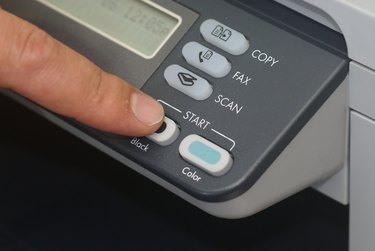
Most homes and offices, despite decades of talk about going paperless, still contain an uneasy mixture of digital and paper-based files and documents. Turning digital documents into physical ones is a relatively simple matter of printing them, but going from physical to digital usually takes more time and effort. The most versatile tool for the job is a scanner. These come in flatbed and sheet fed forms, with sheet fed scanners being the best for use with multi-page documents.
A Quick Description
Video of the Day
Physically, sheet fed scanners closely resemble a compact laser or inkjet printer. This is only natural, because they have similar paper-handling mechanisms. In the case of a scanner, paper documents are drawn from the sheet feeder and passed cross the machine's imaging sensor, ending in the output tray. The scanner's software identifies the printed letters on the page and converts them to digital text -- a process called optical character recognition, or OCR. This software is intelligent enough to recognize graphic images and scan them in their original form.
Video of the Day
What They're Good At
Sheet fed scanners are best used with standard printed materials, from signed legal documents to stacks of memos and invoices. In most cases, you can simply load the feeder and leave the scanner to its work, though sensitive documents should be reviewed by human eyes to check for transcription errors. All but the most entry-level models perform duplex scanning -- reading both sides of a document at once -- which halves the scanning time for a stack of documents.
What They're Not Good At
Despite their speed and versatility, sheet fed scanners have limitations. They can't handle oversized documents, and shouldn't be used with fragile or damaged documents that might be pulled apart in the feeder. They can't scan bound books or magazines, and their imaging sensors work at much lower resolutions than you'd find in a flatbed or photo scanner. If you should need to incorporate high-resolution images into your document, it's almost always best to scan those separately on a flatbed scanner and then insert them manually into your document.
Picking and Choosing
Sheet fed scanners exist to cut through the clutter of your paper documents, and are only poorly adapted for other uses. Choose between them based on your document-handling needs. For example a legal or accounting firm might need a model with a high-capacity sheet feeder, while a small home-based business could pay less for a lower-capacity model. Such high-volume users should also shop for a scanner with a high duty cycle, a measure of the number of pages it can reliably scan in a month. Scanners with higher resolution scan more slowly than their standard-resolution counterparts, but are better for use with heavily-illustrated reports and documents.